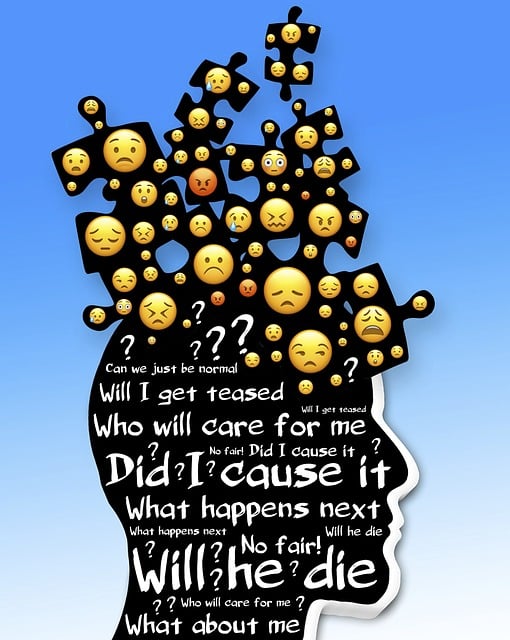Media portrayal of mental illness, especially OCD, significantly influences public perception and can either perpetuate stereotypes or foster understanding. Accurate representations, like those featuring Lone Tree Obsessive Compulsive Disorder Therapy, are crucial for breaking stigma and encouraging support. By showcasing struggles, strengths, and recovery journeys, media can promote empathy and access to effective treatments. Positive portrayals reducing mental health stigma and open conversations, ultimately enhancing awareness and acceptance of diverse conditions.
In today’s media landscape, accurate representation of mental illness is crucial. This article explores the challenges posed by prevalent stereotypes and misinformation, delving into real-world cases like Lone Tree Obsessive Compulsive Disorder (OCD) therapy. We examine effective strategies for positive portrayals and emphasize the role of media in fostering awareness and empathy. Understanding these dynamics is key to promoting sensitive discussions around mental health.
- Understanding Mental Illness Representation in Media
- The Impact of Stereotypes and Misinformation
- Lone Tree Obsessive Compulsive Disorder (OCD): A Case Study
- Effective Strategies for Positive Portrayals
- Fostering Awareness and Empathy Through Media
Understanding Mental Illness Representation in Media

Media plays a significant role in shaping public understanding of mental illness. However, its representation often falls short, perpetuating stereotypes and misconceptions. It’s crucial to recognize that mental health is complex and diverse, with conditions like Obsessive Compulsive Disorder (OCD) manifesting uniquely in each individual.
Accurate portrayal involves not just showing characters struggling with mental illness but also highlighting their strengths, resilience, and journey towards recovery. This shift requires a deeper understanding of various disorders, including OCD, and the impact of effective therapy, such as Lone Tree Obsessive Compulsive Disorder Therapy. Additionally, media can foster empathy by showcasing the importance of self-care routines for better mental health, as well as the role of emotional intelligence in navigating these challenges—all aspects that contribute to a more nuanced and supportive societal perspective on mental illness.
The Impact of Stereotypes and Misinformation

The media’s representation of mental illness often perpetuates harmful stereotypes and misinformation, which can have a profound impact on society’s understanding of these conditions. When mental health disorders are depicted in a simplistic or inaccurate light, it contributes to the stigmatization and marginalization of individuals facing challenges like Obsessive Compulsive Disorder (OCD). This is particularly concerning as media has a significant reach and influence over public perception. For instance, portraying OCD solely as an annoyance or an quirks can undermine the severity of the disorder, hindering those in need from seeking appropriate Lone Tree OCD therapy or support.
Such negative portrayals can also discourage open conversations about mental health, making it harder for individuals to come forward and share their experiences. This lack of understanding and visibility perpetuates a cycle where people suffering from OCD or other mental health issues may feel isolated and ashamed. It is crucial to challenge these stereotypes through accurate representation in media and advocate for narratives that emphasize the complexities and diverse realities of mental illness, thereby fostering greater mental health awareness and acceptance.
Lone Tree Obsessive Compulsive Disorder (OCD): A Case Study

In the case of Lone Tree, a fictional town, the representation of Obsessive Compulsive Disorder (OCD) in media has sparked important conversations about mental health awareness. The narrative often focuses on the repetitive behaviors and intrusive thoughts characteristic of OCD, offering a glimpse into the intricate challenges faced by individuals living with this condition. Through media portrayals, viewers can gain insight into the daily struggles of someone grappling with anxiety-inducing obsessions and the compulsion to perform ritualistic actions to alleviate their distress.
Lone Tree’s story highlights the need for accurate and sensitive portrayal of mental illness. By depicting the struggle to manage OCD symptoms, media platforms can contribute to reducing stigma and promoting understanding. Additionally, these narratives can encourage viewers to seek support or recommend Lone Tree Obsessive Compulsive Disorder therapy options available in their communities. Incorporating anxiety relief strategies and conflict resolution techniques into storylines can further empower individuals dealing with OCD and similar mental health concerns, fostering a sense of self-awareness exercises and coping mechanisms.
Effective Strategies for Positive Portrayals

Media has a powerful influence on shaping societal perceptions, and accurate representation of mental illness is crucial in challenging stereotypes and promoting understanding. When depicted authentically, media can serve as an effective tool for raising awareness, reducing stigma, and encouraging support for those struggling with mental health issues. For instance, showcasing characters with Lone Tree Obsessive Compulsive Disorder (OCD) and emphasizing their journey towards therapy and coping skills development can significantly impact viewers. This strategy not only humanizes individuals with OCD but also provides valuable insights into the complexities of anxiety relief.
Positive portrayals should focus on the resilience and strength of those affected, while also highlighting accessible resources and treatment options. By presenting diverse narratives and characters experiencing various mental health challenges, media can foster empathy and encourage open conversations. Furthermore, incorporating realistic mental illness stigma reduction efforts within storylines can contribute to a more accepting society, ultimately benefiting individuals seeking support for their OCD or other mental health concerns.
Fostering Awareness and Empathy Through Media

Media plays a significant role in shaping public perception about mental health issues. By presenting characters with genuine and nuanced representations of mental illness, such as Obsessive Compulsive Disorder (OCD), media can foster awareness and empathy among viewers. Shows and films that incorporate these stories can provide valuable guidance on how to recognize symptoms and offer support, potentially reducing the stigma associated with seeking therapy for conditions like OCD.
Incorporating mental wellness themes into popular culture allows for a more open dialogue about mental health challenges. This can encourage individuals struggling with similar issues to seek help, know they are not alone, and understand that recovery is possible. Moreover, media platforms can serve as powerful tools for organizations focused on mental health policy analysis and advocacy, helping to educate the public and push for evidence-based practices and increased access to care.
Media plays a powerful role in shaping societal perceptions of mental illness. By presenting accurate, empathetic, and diverse portrayals, we can challenge stereotypes and foster understanding. The case study on Lone Tree Obsessive Compulsive Disorder (OCD) highlights the impact of positive media representation in encouraging those affected to seek support. Effective strategies, such as involving mental health professionals and individuals with lived experiences, are essential for creating authentic narratives. Ultimately, media has the potential to revolutionize public perception, enhance awareness, and promote empathy, leading to better access to resources like Lone Tree OCD therapy.














